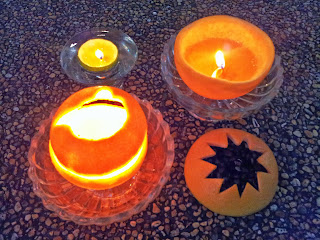Petrosains successfully held the grand finals of Petrosains National Science Show Competition for the fifth consecutive year on 23rd and 24th October 2013. Kompleks Kraf, Jalan Conlay was once again became the official venue for the final competition for both the school category and the open category.
After the initial kick-off in early February this year, we received a total of 317 entries from secondary schools all over Malaysia including from boarding schools such as Maktab Rendah Sains Mara. After a stringent selection process by our panel of judges, 60 teams were shortlisted and competed against each other in the six zone level competition held in Johor Bharu, Kuala Lumpur, Kuantan, Kuching, Kota Kinabalu and Sg. Petani. . The winner from each zone then proceeded to the grand finals together with two wildcard teams chosen by the panel of judges to compete in the grand finals.on 2013.
 |
| Some science hunting with the participants from Sarawak |
As for the open category, 36 entries were received from teams representing public and private higher learning institutions in Malaysia as well as open teams. . After vetting thoroughly , the panel of judges selected 19 teams to compete in the semi final round and with that, the top nine teams emerged to compete in the grand finals.
This competition is an initiative taken by Petrosains, to promote effective and informal learning methods, and popularize the subjects of science amongst secondary school students, This competition also takes things one step further by putting s students on stage and giving them the opportunity to explain science to others. This indirectly refines and deepens their own understanding of the science concept and helps in building their confidence and communication skills that will be a huge asset for them in the future. Other than just performing for the final, the finalists of this year’s school category were also given the opportunity to have a direct up-close session with Dr. Graham Walker, a PhD holder in science show from Australia National University. During the session, Dr. Graham shared valuable information and tips in science show performing.
School Category
 |
| Amazing Acid and Base show by MRSM Pendang |
 |
| Having some fun with science |
 |
| Special science show performance from the deaf and mute students of SMKV Indah Pura |
And the champion of the Petrosains Science Show Competition 2013 School Category is SMK Panchor!!! In true cinematic fashion, Zarul Mustaqeem Abdul Samad of SMK Panchor fell to the floor in elated disbelief when the final result was announced. Their win was attributed to natural onstage chemistry between the two participants, skillful audience engagement and fascinating science show performance that captured the judges attention and scored them high marks. |
| The happy faces of the winners |
As for the Open Category, it was an extremely tight battle between all 9 teams. Each of them came out with awe-inspiring shows that included the science of sounds, dry ice and even bubbles. In the end, Institut Pendidikan Guru Ipoh created a – surprise when both their teams swept away the first and second Place for the finals, defeating other teams from Universiti Sains Malaysia, Politeknik Balik Pulau and the enigmatic Yong Brothers’ Robotic Show.
Open Category
 |
| Discovering interesting element about density with Politeknik Balik Pulau team |
 |
| Fantastic show about heat capacity and pressure by the Institut Perguruan Perlis |
 |
| Travelling through time with amazing science discovery by the Institut Perguruan Ipoh |
Results:
School Category
Champion SMK Panchor
Runner- up : SMK Seksyen 10, Kota Damansara
Third place : SMK Sultan Ismail, SMK Lembah Bidong
And the 6 Special Awards go to :-
Best Script : MRSM Pendang, Kedah
Best Future Star : SMK Tamparuli, Sabah
Best ‘Wow’ Demonstration : SMK Panchor, Negeri Sembilan
Best Performer : SMK Sultan Ismail, Johor
Most Popular Group : SMK Panchor, Negeri Sembilan
Highest Number of Entries : Negeri Johor
Open Category
Champion : Institut Pendidikan Guru Ipoh (Team Loh)
Naib Johan : Institut Pendidikan Guru Ipoh (Team Tan)
Tempat Ketiga : Yong Brothers
 |
| The happy faces of the winners |
Definitely can’t wait to see what 2014 has to offer for the competition!











































- Follow Us on Twitter!
- "Join Us on Facebook!
- RSS
Contact